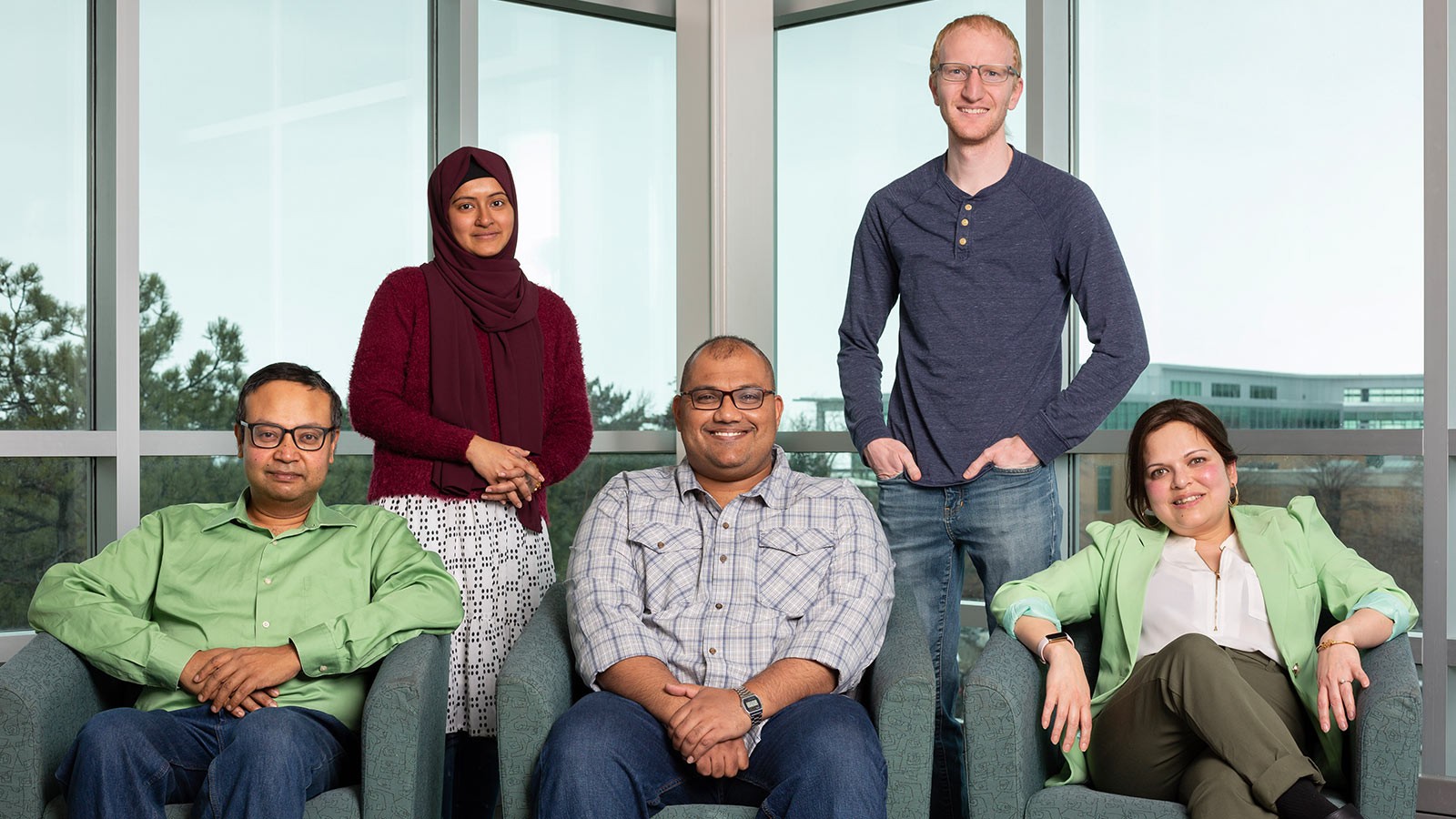Doctoral Candidate Creates Technique to Improve AI Energy Efficiency
By Sydney Dahle |
Noel Daniel Gundi was the lead researcher on a paper focuses on improving the energy efficiency of artificial intelligence software.
An engineering doctoral student is shedding light on the reliability of today’s modern-day artificial intelligence with an issue most do not think about: energy efficiency.
Noel Daniel Gundi, who will defend his dissertation later in the semester, was the lead collaborator on research addressing reliability and faults in artificial intelligence. The research paper will be presented and published at the Design Automation Conference in July. It focuses on a computer chip used for artificial intelligence applications, such as Google’s search engines. When at low power, the chip can malfunction and cause issues in the results of calculations. Gundi’s technique, called STRIVE, can detect and fix the errors in a way that uses less energy, making the computer chip faster and more efficient.
DAC is sponsored by the Institute of Electrical and Electronics Engineers and the Association for Computing Machinery. The conference is a prestigious publication venue in the electrical and computer engineering field, and the selection process for publication has a 23 percent acceptance rate.
“I feel very thankful to have been granted publication for such a competitive conference,” Gundi said. “I look forward to the conference and to continue working on my research.”
Gundi, who is originally from India, has spent much of his doctorate researching and learning about AI, whether it be updating current architecture of the computer chip, machine learning or energy consumption of AI software. Sanghamitra Roy has served as his mentor for the greater part of his studies.
Other authors on the paper included Zinnia Muntaha Mowri, Andrew Chamberlin, Koushik Chakraborty and Roy. Chakraborty and Roy are professors in the ECE department who also oversee the Bridge Lab, where research focuses on creating bridges between computer architecture and physical design, energy efficacy, design automation, network-on-chip design and 3D integrated circuits.
“Noel is a fantastic student and I have enjoyed watching him grow,” Roy said. “I can’t wait to see what else he accomplishes in the future.
More information about the Bridge Lab and its publications can be found at bridgelab.usu.edu.
In addition to Gundi, authors of the paper included included Zinnia Muntaha Mowri, Andrew Chamberlin, Koushik Chakraborty and Sanghamitra Roy.
WRITER
Sydney Dahle
Public Relations Specialist
College of Engineering
435-797-7512
sydney.dahle@usu.edu
CONTACT
Noel Daniel Gundi
noeldanielm@gmail.com
TOPICS
Research 878stories Engineering 336storiesComments and questions regarding this article may be directed to the contact person listed on this page.









